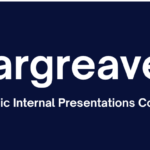
Hargreaves Branding Changes
20th November 2025
Why SME Owners Open Up More to Peer Groups Than to Their Own Teams — And Why It Matters
20th November 2025Why Some SME Owners Avoid a Strategy Documentation-Based Culture — And Why It Holds Their Business Back
In many SMEs, strategy documentation is rare, inconsistent, or avoided altogether. On the surface, the reasons sound practical:
-
“We’re too busy.”
-
“We communicate informally.”
-
“Everyone already knows what they need to do.”
-
“We don’t want unnecessary meetings.”
But scratch beneath the surface and a deeper pattern emerges — one that few leaders openly acknowledge but many privately feel:
Documenting strategy feels risky. Because once the strategy is written, presented, and shared — it becomes something you can be wrong about.
This is a perfectly understandable human reaction. But it is also one of the most common and most damaging blind spots in SME leadership.
In this article, we explore why this happens, why it matters, and what to do about it.
1. Why Documentation Can Feel Dangerous to SME Owners
Many SME founders built their companies through instinct, improvisation, and personal credibility. Decisions were made quickly. Strategy lived in their heads. The business moved fast because the leader moved fast.
A structured internal presentation culture — especially one that documents evolving strategy — changes the dynamic.
Documentation introduces:
-
Visibility
-
Accountability
-
Consistency
-
Challenge
For some owners, this triggers an understandable fear:
“If I present our strategy every month, and things don’t go to plan, does that make me look like I failed?”
When everything stays verbal and informal, memory is flexible. Interpretation is flexible. Priorities are flexible.
That flexibility can feel safe.
Once strategy becomes visible, it becomes real.
2. The Unspoken Fears Underneath “We Don’t Have Time”
Most owners never say this out loud. Instead, they default to practical explanations. But the deeper drivers often include:
a) Fear of being proven wrong
A documented decision is one everyone can see.
If the outcome is poor, it’s harder to rewrite the narrative.
b) Fear of losing freedom to change direction
Documentation creates expectations.
A verbal strategy can shift without scrutiny.
c) Fear of losing authority
Clarity gives teams confidence.
Confidence creates questions.
Questions invite challenge.
For leaders used to being the single source of truth, this shift can feel uncomfortable.
d) Fear of exposing gaps in the strategy
Unwritten strategy is uncriticised strategy.
Written strategy invites refinement — which can feel like criticism.
These fears are rarely about incompetence — they’re about vulnerability.
3. The Hidden Cost of Avoiding Presentation Culture
Avoiding structured presentations may feel like self-protection, but it comes at a significant business cost:
Misalignment
People fill gaps in communication with assumptions — and assumptions are inconsistent.
Slow execution
If the strategy isn’t clear, teams waste time interpreting it or working at cross-purposes.
Dependence on the owner
When strategy lives in the founder’s head, the founder becomes the bottleneck.
Loss of momentum
Without a cadence of progress reviews, strategy drifts.
Reduced leadership confidence
Avoidance breeds uncertainty.
Clarity breeds confidence.
Documentation isn’t dangerous — lack of clarity is.
4. The Strategic Narrative Isn’t a Report Card — It’s a Leadership Tool
One of the biggest mindset shifts for SME leaders is realising:
A documented strategic narrative doesn’t judge you — it supports you.
It isn’t a prediction.
It isn’t a guarantee.
It isn’t a promise carved in stone.
It is a living narrative that evolves as the business learns and as the environment changes.
A strong internal presentation rhythm helps leaders:
-
articulate their thinking
-
communicate priorities clearly
-
maintain alignment through change
-
strengthen trust
-
show how decisions evolve — instead of appearing inconsistent
In fact, counterintuitively:
Documented strategy protects leadership credibility.
Undocumented strategy exposes it.
5. Why SMEs Need a Presentation-Based Culture
A healthy presentation culture:
-
forces clarity
-
accelerates communication
-
reduces confusion
-
makes decisions transparent
-
builds a shared understanding
-
improves accountability
-
empowers managers
-
and stabilises the business during growth
The goal is not corporate bureaucracy.
The goal is clarity and alignment — without the noise.
This is where SMEs often struggle and where the right coaching creates real value.
6. The Hargreaves Perspective
At Hargreaves, we see this pattern consistently across SMEs. Leaders want clarity, alignment, and confident communication — but they resist documentation because it feels exposing.
Our role is to help them:
-
communicate more clearly
-
document strategy in a practical, flexible way
-
build presentation rhythms that support execution
-
develop stronger leadership skills
-
remove the fear from visibility
We help teams move from:
“If I document this, I could be wrong.”
to:
“If I document this, we can move faster, together.”
7. Final Thought
SMEs don’t struggle because they lack ideas.
They struggle because the ideas stay in the owner’s head.
A strategic presentation culture solves this.
It replaces ambiguity with alignment.
It replaces assumption with clarity.
It replaces fear with confidence.
And most importantly:
It supports growth without adding unnecessary corporate weight.
To discuss, contact Adrian Hargreaves 07866795858 | adrian@hargreaves-marketing.co.uk




